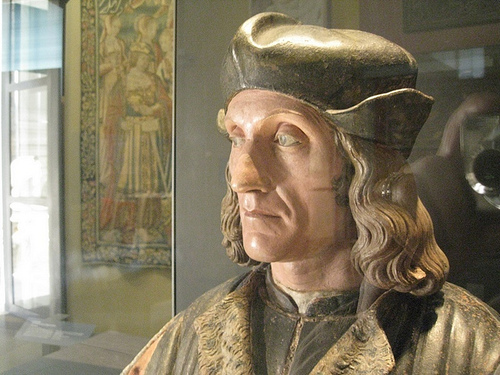The Victoria and Albert Museum
This museum is near the Science Museum and Natural History Museum in London. Often abbreviated the V&A, the museum contains a great collection of design and art and holds over 3000 years worth of artifacts from many of the world’s richest cultures. This includes the most comprehensive collection of British art and design from the 1500s to the 1900s. There’s sculpture, photography, ceramics, furniture, and much more.

The world’s largest museum of decorative design and hearts is the V&A Museum in London and contains a permanent collection of over 4.5 million objects. It was founded in 1852 and named after Queen Victoria and Prince Albert. It has since grown to now cover some 12.5 acres and contains approximately 145 galleries. The collection spans over 5000 years of art, from ancient times to the present day, in virtually every medium, from the cultures of North Africa, Asia, North America, and Europe. The museum is a non departmental public body sponsored by the Department for Culture, Media and Sport.
The holdings of photographs, drawings, printmaking and prints, sculpture, medieval objects, furniture, jewelery, ironwork, silver, costumes, textiles, glass, and ceramics are among the most comprehensive and largest in the world. The museum contains the world’s largest collection of post classical sculpture and the holdings of Italian Renaissance items are the largest outside Italy. The departments of Asia include art from Korea, Japan, China, South Asia, and the Islamic world. The East Asian collections are among the finest in Europe, having unique strengths in metalwork and ceramics, while the Islamic collection, alongside the Metropolitan Museum of Art and the Musee du Louvre, is among the largest in the world.
Alongside other neighboring institutions, including the Science Museum and the Natural History Museum, the V&A is located in an area of great educational, scientific, and cultural importance. The Museum has taken on a large £150m redevelopment program which has seen a major overhaul of the departments including the introduction visitor facilities, shops, gardens, and newer galleries since 2001. Entrance to the museum has been free since 2001 following in similar vein to other national UK museums.
A few galleries were completely redesigned in the 1990s including: Chinese, Japanese, and Indian iron work, the main silverware and main glass gallery. This gallery was further enhanced in 2002 when some of the Victorian decoration was recreated. This includes two of the ten columns which had the elaborately painted design on the ceiling restored and the ceramic decoration replaced. As part of the 2006 renovation most of the Victorian floors were covered in the linoleum after the Second World War and the mosaic floors in the sculpture gallery was restored.
After the success of the British Galleries which opened in 2001, it was decided to embark on a major redesign of all the galleries in the museum which is known as the Future Plan. The plan was started in 2002 and is expected to take about ten years.
Many galleries have since been redesigned, most notably: The Silver Gallery and the Contemporary in 2002; The Painting Galleries, the main entrance and the Photography in 2003, contemporary glass, Members’ Room, metal ware, the RIBA and V&A reading rooms, architecture, New signage throughout the museum, and tunnel to the subway in 2004; Sacred silver and stained glass, the garden, displays in room 117, drawings and prints, portrait miniatures in 2005; Sculpture galleries, the new café, and Central Hall shop in 2006. Several architects and designers have been involved in this work.
Controversy has recently surrounded the museum’s proposed £80 million extension was criticized as out of keeping with the architecture of the original buildings.

